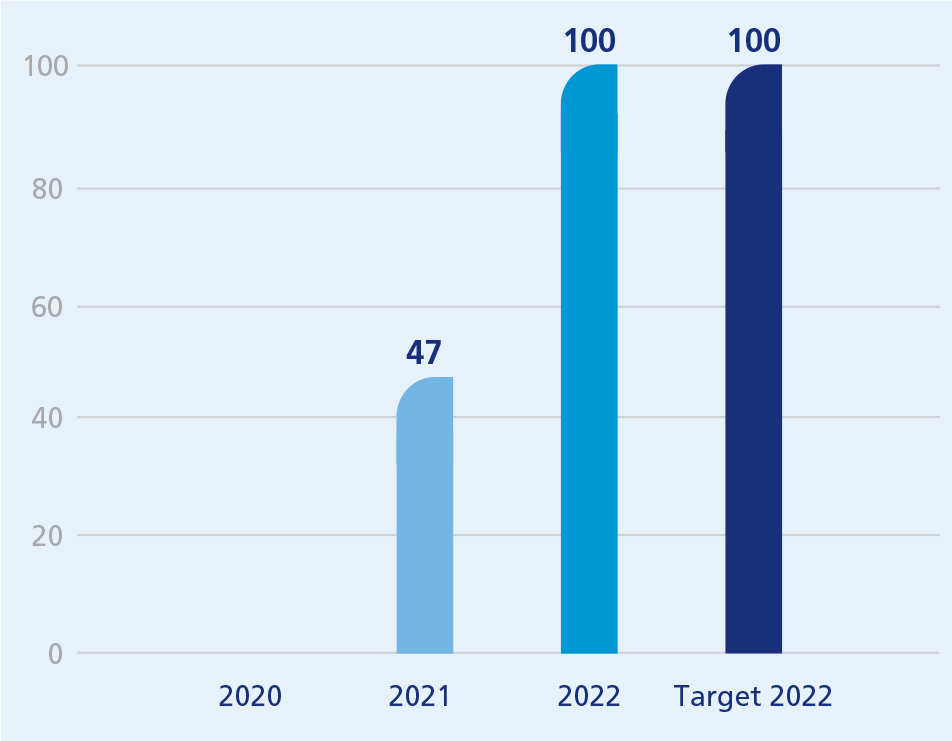3.1.2.1 Policy
The Paris Climate Agreement assigns the same level of importance to the goal of adapting to climate change as to mitigation. However, it must be acknowledged that given the lack of simple, shared indicators, the regulatory framework for adapting to climate change is still considerably less developed than that for mitigation.
The National Adaptation Plan for Climate Change (1) makes France one of the most advanced countries in the world in terms of planning for adaptation to climate change. France aims to effectively adapt to a regional climate in Metropolitan France and overseas territories by the middle of the 21st century consistent with a temperature increase of 1.5-2°C worldwide compared to 19th century temperatures. However, this plan does not establish any regulatory requirements that are directly applicable to businesses.
The EDF group has therefore taken a responsible, proactive approach by establishing a set of integrated commitments in the Group’s Corporate Social Responsibility (CSR) policy.
EDF group commitments
Pursuant to this policy, the EDF group undertakes to:
- evaluate the impacts of climate change on future and existing activities;
- adapt existing installations to make them less sensitive to climatic conditions and more resilient to extreme weather events;
- incorporate climate change scenarios in the design of new installations;
- adapt the Group’s solutions, internal operations and know-how in light of climate change;
- take into account the ecosystemic dimension of climate change.
In particular, this policy states that entities most exposed to the physical consequences of climate change should draw up a climate change adaptation plan and update it every five years.
It is important to note that adaptation and mitigation actions are both vital and complementary. Unquestionably, the EDF group’s foremost climate change adaptation action consists in striving to produce electricity and heat without emitting greenhouse gases.
3.1.2.2 Key performance indicator
GROUP KEY PERFORMANCE INDICATOR
In addition to the priority actions which have long been undertaken by the Group, the rollout rate for new climate change adaptation plans aims to ensure the structuring, prioritisation, and industrialisation of actions undertaken in Group entities exposed to the physical risks of climate change, in compliance with TCFD requirements.
Depending on the entities concerned (2), this involves producing an adaptation plan by a qualitative and/or quantitative approach, to be integrated into the environmental management system by the end of 2022.
This target has been achieved.
Deployment rate of new climate change adaptation plans within concerned entities (in %)

This graph shows the deployment rate of new climate change adaptation plans within concerned entities (in %).
2020 : -
2021 : 47
2022 : 100
target 2022 : 100
3.1.2.3 From climate disaster plan to global resilience strategy
By 1999, the storms Lothar and Martin had already led EDF to work on mitigating the physical impact of climate change on its activities. The EDF group developed a climate disaster plan in 2004, followed by a climate change adaptation strategy in 2010.
The EDF group adaptation strategy covers production facilities with a lifespan of over 40 years, such as nuclear power plants and hydroelectric dams. All EDF group entities are required to take account of climate risks (including both physical risks and “transition” risks) when mapping their risks (3).
3.1.2.4 High-level, internal Climate Department
Immediately after the publication of the IPCC’s first report in 1990, the EDF group resolved to develop internal skills focusing on climate issues, in collaboration with key organisations such as Météo France (i.e. the French meteorological office).
EDF R&D’s Climate Department acts as an interface between scientific knowledge about the climate and the EDF group’s business lines. It provides the Group’s different business lines with climate data that can be used to quantify climate- change-related risks and develop appropriate adaptation plans. For its impact and dimensioning studies, the EDF group systematically takes into account the IPCC’s worst-case scenario in terms of global warming; currently, this is the RCP 8.5 scenario.
The EDF group has a team of some fifteen permanent researchers investigating the consequences of climate change on its existing and future production fleets for nuclear, hydro, wind, and solar power, etc., changes in production potential from renewable energy and trends in energy demand. The Group has developed an operational unit to monitor meteorological phenomena and forecast their impact on water catchment sources.
(1) National Adaptation Plan for Climate Change (Plan national d’adaptation au changement climatique) for 2018-2022, known as PNACC-2.
(2) DPNT, EDF Hydro, PEI, IES, EDF UK. Dalkia, Luminus, Edison, DIPNN, EDF-R, DTEO.
(3) See section 3.1.3.2.2 “Identifying climate change risks and opportunities”.
